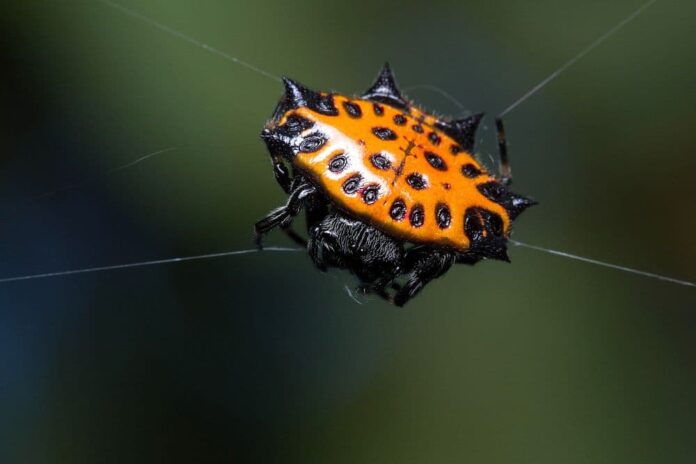Orb spiders are interesting arachnids that build spiral wheel-shaped webs that are common in fields, forests, and gardens. Even the spiders themselves have an interesting appearance that plays a part in attracting prey. We are going to some strange-looking orb spider species today, let’s see which one you like the most.
1Arrowhead Spider
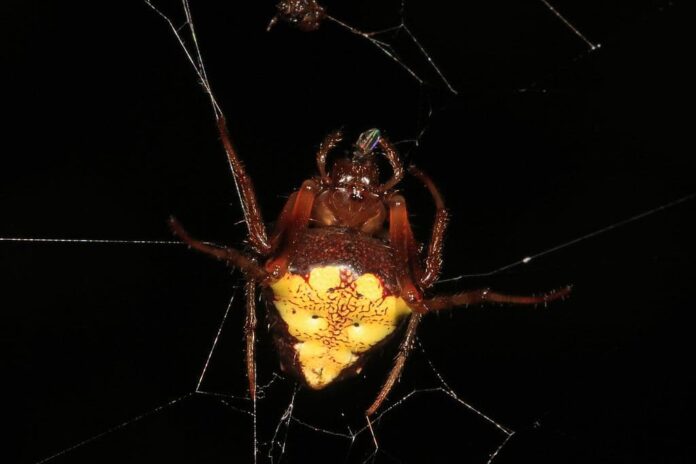
Arrowhead spiders are small spiders whose legs grow up to over 2.5 centimeters long. The unique thing about these orb spiders is that their abdomens are pointy and triangular, resembling an arrow tip. Its body is reddish-brown with a zigzag pattern that makes it appear bigger than its actual size. Females are larger and they have white or yellow abdomens while males lack the triangle shape on their abdomens. Some even have spines on the front and each side of their bodies that function as a defense against their predators.
This orb spider species is native across North America, especially in rural and urban habitats like gardens, plantations, woods, and yards. They like to be in areas with bushes and trees where they can spin their webs at night. Speaking of webs, the webs that arrowhead spiders weave are stronger than most orb weaver spiders in the same family. At the same time, their webs are flat and spiral-shaped, and they are almost invisible to their insect prey. Arrowhead spiders capture insects by trapping them in the web sticky strands before delivering the venom via their bites.
2Christmas Spider / Jewel Spider
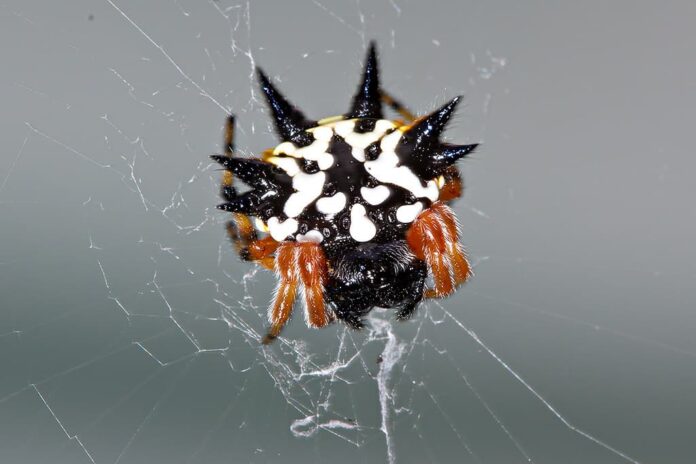
Here we have another small orb spider species that is only around 0.5 to 1.2 centimeters. The distinctive characteristic that they have are the 6 spines on their abdomens on their lively body. Just like the name suggests, Christmas spiders are bright with their shiny black body with orange, white, and yellow patterns. Their bodies are rectangular in shape and are covered in small white hairs. Jewel spiders have 8 eyes that are arranged in 2 rows, and they have 4 to 6 small teeth.
The Christmas spiders or jewel spiders are endemic to Australia, living in various areas where they can build their webs. Usually, they live in dry eucalypt forests, fences, and shrubs. Females sit in the middle of the web while males live in aggregations of webs where they support each other. As opportunistic predators, they feed on flying insects like flies and mosquitos that fly into their webs.
3Golden Silk Orb Weaver
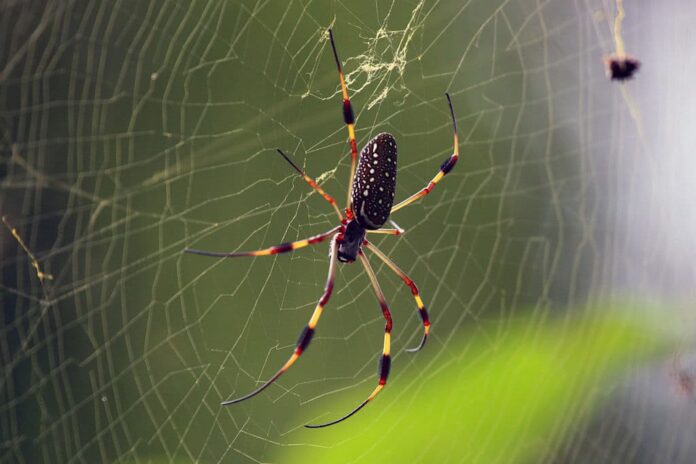
The golden silk orb weavers are medium-sized spiders that can reach the size of 4.8 to 5.1 centimeters excluding legs. Their colors vary from reddish to greenish yellow with some white parts on the cephalothorax and top of the abdomen. A golden silk orb weaver has long spindly legs that are gold with brown bands. Along with that, they also have a contrast of black and green, dark brown, or yellow that keep predators away. This coloration is a warning to potential predators that they are dangerous and venomous. However, the venom is only effective with prey and small animals but very mild to humans.
The population of these orb spiders is quite widespread in warm regions across Africa, Asia, Australia, and the Americas. Their common habitats are coastal sand dune shrublands, dry open forests and woodlands, and mangrove habitats. They have impressive web weaving skill that allows them to produce large asymmetric orb webs up to 1.5 meters in diameter. This orb spider species got its name from the yellow color of its spider silk that shines like gold in sunlight. The webs can capture prey such as small flies and beetles as well as larger insects like cicadas and locusts. On top of that, the webs are strong enough that they can even trap small bats and birds.
4Marbled Orbweaver
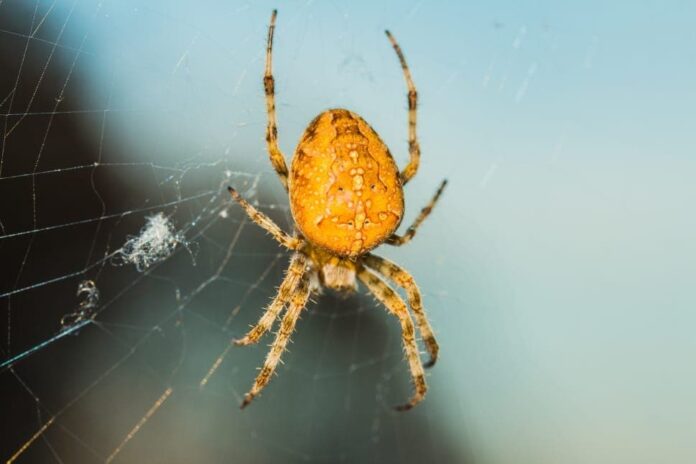
Also goes by the name pumpkin spiders, marbled spiders look exactly like what their names say. This orb spider species has 2 varieties, one with an orange abdomen with black or brown marbling. While another is paler that is almost white with a single dark patch towards the rear of the abdomen. Adult female marbled orbweavers are 0.9 to 2 centimeters with a very large oval abdomen that can be pale yellow, red, or white.
The range of this spider is from North America through Europe to Japan where they live in shrubs and trees. At the same time, they also inhabit grasses, moist wooded areas, and tall weeds along the banks of streams. Where they live, they build webs that have a signal threat that vibrates when prey is captured. That is how the spider knows that the food is ready so that it comes out to feast.
5Spinybacked Orbweaver
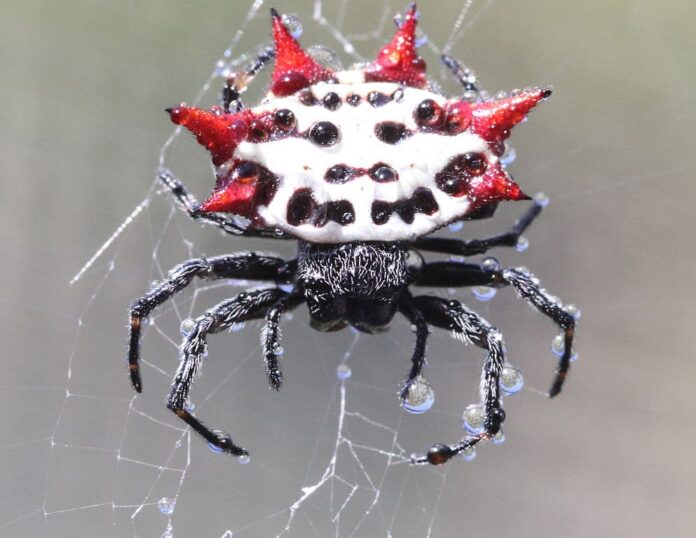
This is one of the most fascinating orb spiders that are very eye-catching to look at. A spinybacked orbweaver is small, and it has 6 abdominal spine-like projections with a bright color. Mostly, the carapace, legs, and underside are black with white spots under the abdomen. The spines of the spiders are either black or red, giving them the most distinctive look. Male spinybacked orbweavers are usually smaller than females, and they lack pointy spines.
Spinybacked orbweavers are native to Central America, North America, South America, and the Caribbean as well as Hawaii. They like to live around the edge of woodlands, fences, and shrubby gardens where they can easily weave their webs. The webs that they build are circular in shape with just a few spirals at the center. They spin a new web each night to catch small insects such as beetles, mosquitos, moths, wasps, and whiteflies. Spinybacked orbweavers are beneficial because they help protect crops and garden plants from insects and pests.
6Tailed Spider / Scorpion-Tailed Spider
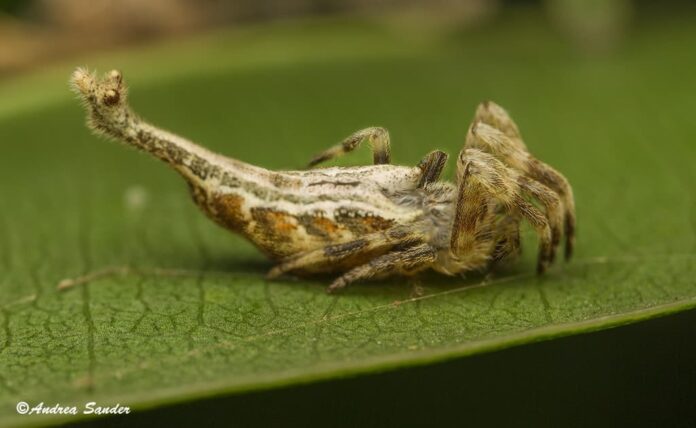
Its name says it all, scorpion-tailed spiders have a long abdomen that resembles a tail that will curl up when disturbed. Only females have this feature, and they grow up to 1 to 3 centimeters long. The tail of the spiders gets longer after each molt, and they can arch it over their head from behind. When doing so, the tail resembles a scorpion in an attack position. The only of these orb spiders is from brown and cream to black and yellow.
This orb spider species is found in Africa, Asia, and Oceania where they live in bushland, forests, and urban gardens. They build circuit webs where they stay in the center both day and night to feed on small insects. The web that they weave can be up to 1 meter in diameter and 2 meters above the ground. It is likely to find them around the drains in the basements but these spiders keep pests under control.
7Two-Spined Spider
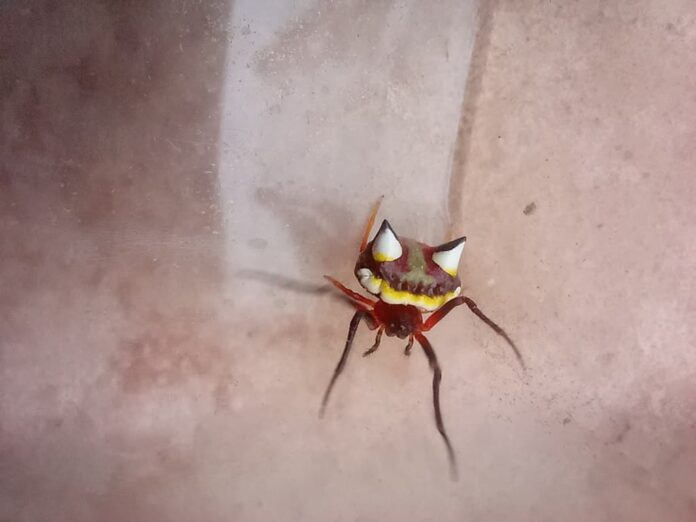
Two-spined spiders are around 0.8 centimeters, and males are smaller than the females. A two-spined spider has a round abdomen that is black, bright red, green, and yellow with two large white spines. The front part of the abdomen has a cream and yellow broad band while the rear has an upward pointing chevron marking. The most interesting part about them is that they are one of the very few spiders that can change color. They can quickly change the color to confuse the predators by blending in with their surroundings.
These orb spiders are native to Australia, across New South Wales and Queensland where they inhabit forests and woodlands. Two-spined spiders usually hide under the leaves during the day so it is not common to see them. When the night comes, they emerge and spin a horizontal orb web to catch night-flying insects like moths. As the morning approaches, they eat their web before going back to hiding.
Related Post: Things You Don’t Know About Wrap-Around Spiders

